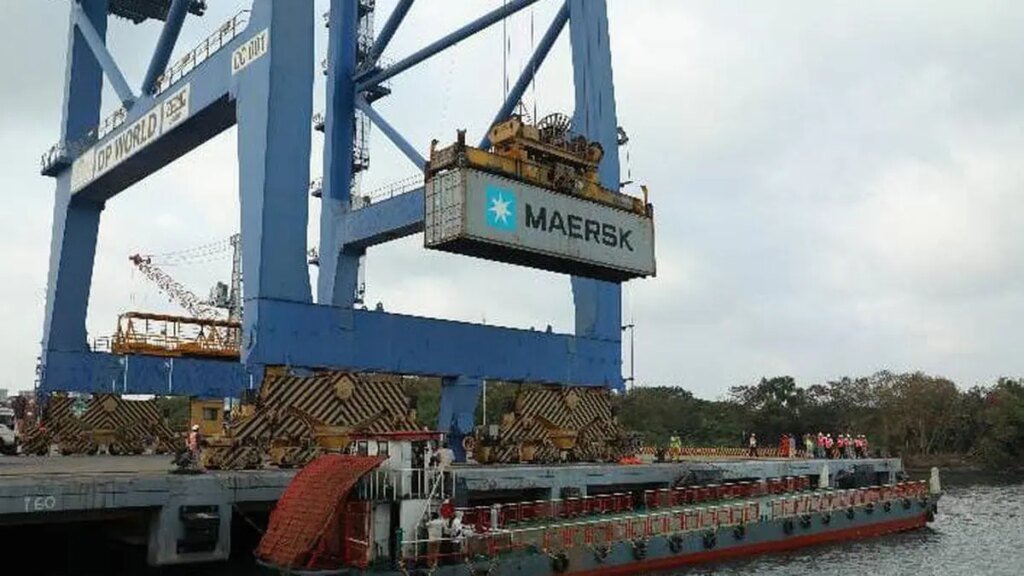India’s June crude oil imports reinforce centrality of Russian, Middle Eastern barrels

The centrality of Russian barrels supported by Middle Eastern flows during June reinforces India’s price-sensitive and flexible crude oil sourcing strategy with refining economics and margins driving procurement decisions.
According to the latest trade numbers from global real-time data and analytics provider Kpler, India’s crude oil imports last month stood at around 4.8 million barrels per day (mb/d) provisionally, marginally higher from May, but short of the March high (5.24 mb/d).
Russia continued its dominance as the top supplier, reaching around 2.07 mb/d — the highest monthly volume since July 2024. Meanwhile, imports from the Middle East remain significant but showed signs of increasing volatility. On the other hand, barrels from the Americas continue to be modest and steady, it added.
Refinery economics
Sumit Ritolia, Kpler’s Lead Research Analyst for Refining & Modeling, told businessline: “June highlighted a renewed surge in Russian crude flows to India, underlining Moscow’s success in maintaining Asian market access despite sanctions.”
Middle Eastern suppliers remain central to India’s energy security but face stiff competition, while American and Latin American flows offer diversification but are cost-sensitive, he pointed out.
This resurgence in Russian volumes reflects both commercial incentives and geopolitical realignments, Ritolia emphasised adding, that Russian barrels remain highly competitive due to discounts, payment mechanisms, and logistical flexibility via alternative shipping and insurance networks.
Despite mounting Western sanctions, Indian refiners have managed to maintain — and even expand — procurement from Russia. Barring any severe logistical or regulatory disruptions, this trend is likely to persist in the coming months, he added.
Middle Eastern suppliers — Iraq, Saudi Arabia and the UAE — collectively supplied around 1.96 mb/d to India, a slight reduction in volumes M-o-M but higher Y-o-Y, signifying the importance of the Middle East in India’s crude basket.
Price flexibility
However, Ritolia pointed out that Russian price flexibility continues to pressure Middle Eastern suppliers, potentially limiting their ability to expand market share in India. Still, the proximity and reliability of Gulf suppliers, particularly Saudi, Iraq and the UAE, ensures that they will remain core contributors to India’s crude slate.
“The US supplied about 303,000 b/d in June, primarily consisting of light, sweet grades such as WTI and Cold Lake blend. While desirable for crude blending and refinery optimization, American crude remains relatively high-cost due to freight and logistics (takes 30-45 days and is more prone to price fluctuations), and has seen limited scope for expansion,” he added.
Unless trans-Atlantic arbitrage improves or a diversification push is triggered by instability in other supply regions, import volumes from the Americas are unlikely to grow substantially in the short term, he projected.
Looking ahead, said Ritolia, Russia will likely remain India’s largest crude supplier (35-40 per cent) supported by price competitiveness and techno-economics.
However, this dominance could face pressure if the West escalates enforcement of secondary sanctions targeting financial or shipping facilitators. Such a scenario could either reduce Russian volumes or push Indian refiners to seek greater compliance safeguards, he added.
Meanwhile, imports from the Middle East are expected to stabilize in the 35–40 per cent range, with Iraq, Saudi Arabia, and the UAE continuing to play key roles.
“India is also expected to sustain its diversification efforts, tapping additional volumes from Africa, Latin America, and the United States to optimize refinery economics, balance geopolitical exposure, and enhance energy security,” Ritolia said.
Inventory levels
On inventory levels, Ritolia said that the surge is driven by tactical buying, not a structural shift.
The indication that India’s inventory levels are high is backed by data, particularly from March to May 2025, during which stocks rose noticeably—reflecting refiners’ response to lower crude prices and favourable arbitrage conditions, he explained.
“June, however, marked a modest drawdown of 0.53 million barrels, suggesting a shift toward inventory utilization. This pattern is consistent with broader market behaviour, where refiners often front-load purchases during price dips to hedge against future supply risks,” he added.
Kpler inventory data show India’s Strategic Petroleum Reserve (SPR) volumes have remained broadly stable over the past year. However, overall inventories — including those held at refineries — have increased in recent months, reinforcing the view that refiners were bolstering commercial stocks, possibly with energy security in mind.
Published on July 7, 2025





